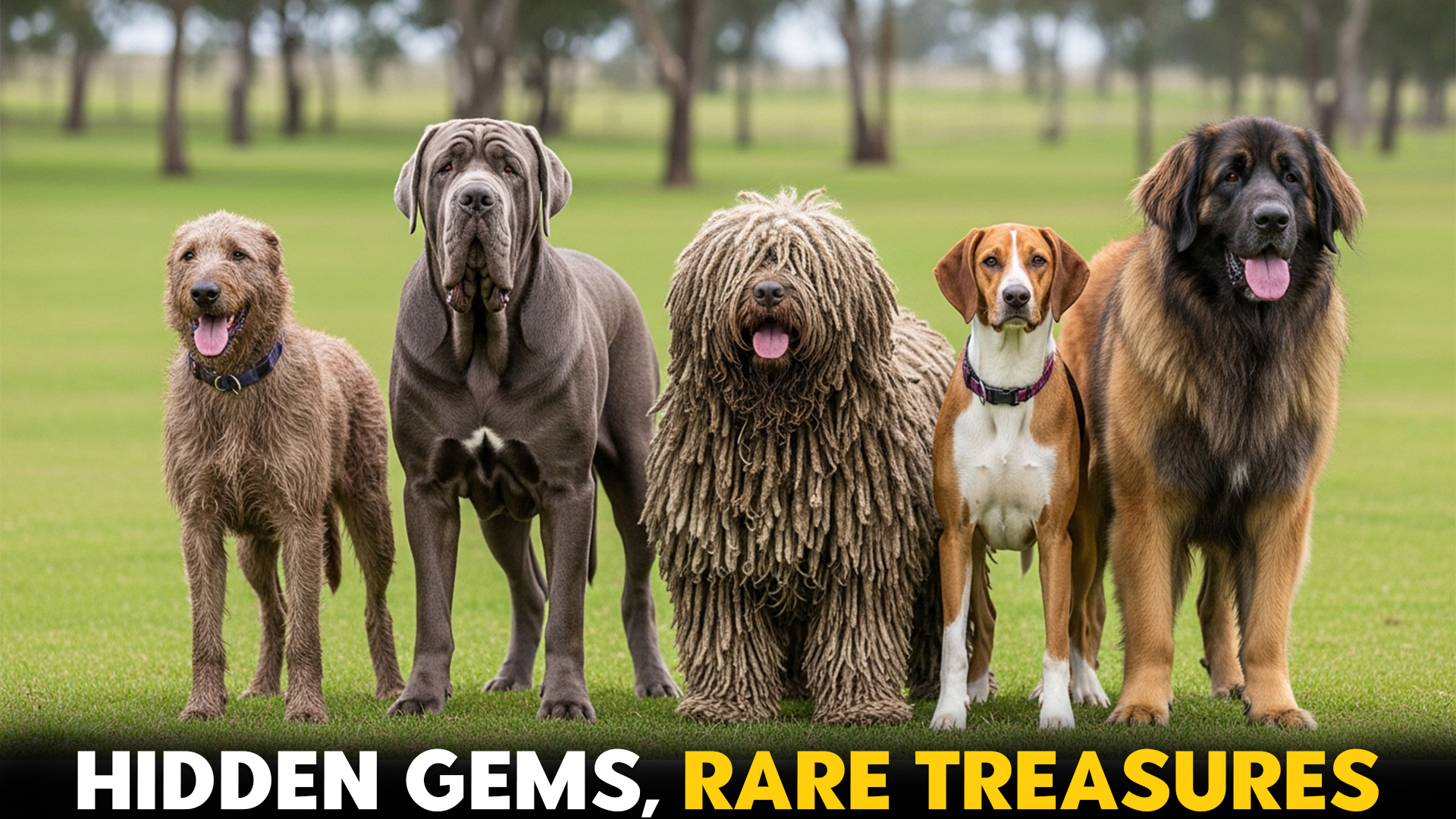Did you know that studies show dogs are capable of recognizing human emotions and forming lifelong bonds with their families? According to research from 2025, dogs have been found to read our facial expressions with remarkable accuracy, making them deeply attuned to our feelings.
In the world of rare dog breeds, this bond can be even more profound. These breeds, often hard to find, are known for their exceptional loyalty and devotion, traits that make them stand out from the crowd.
While these breeds may not be as commonly seen, their loyalty often surpasses that of many more popular breeds. Their rare status often makes them a choice for families seeking a deeper, more unique connection with their canine companions.
In this article, we explore seven of these rare breeds, highlighting their deep commitment to family and their unwavering loyalty.
These breeds may be rare, but their hearts are as big as their devotion.
Rare Dog Breeds Known For Their Loyalty
1. Otterhound
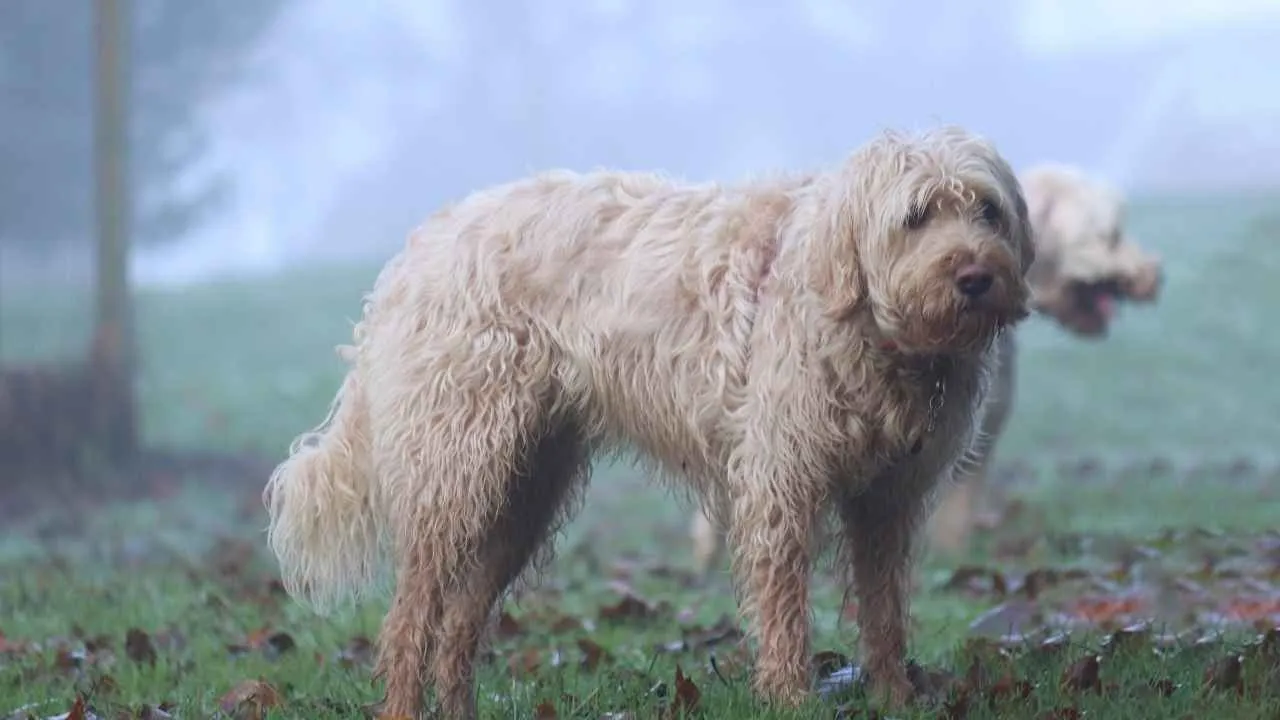
History & Rarity:
The Otterhound, with its roots in England, was originally bred in the 12th century to hunt otters. Once a popular working dog, its rarity today is due to the decline of otter hunting and the breed’s specific needs for large outdoor spaces. Its distinctive rough coat and large paws make it a unique yet rare breed.
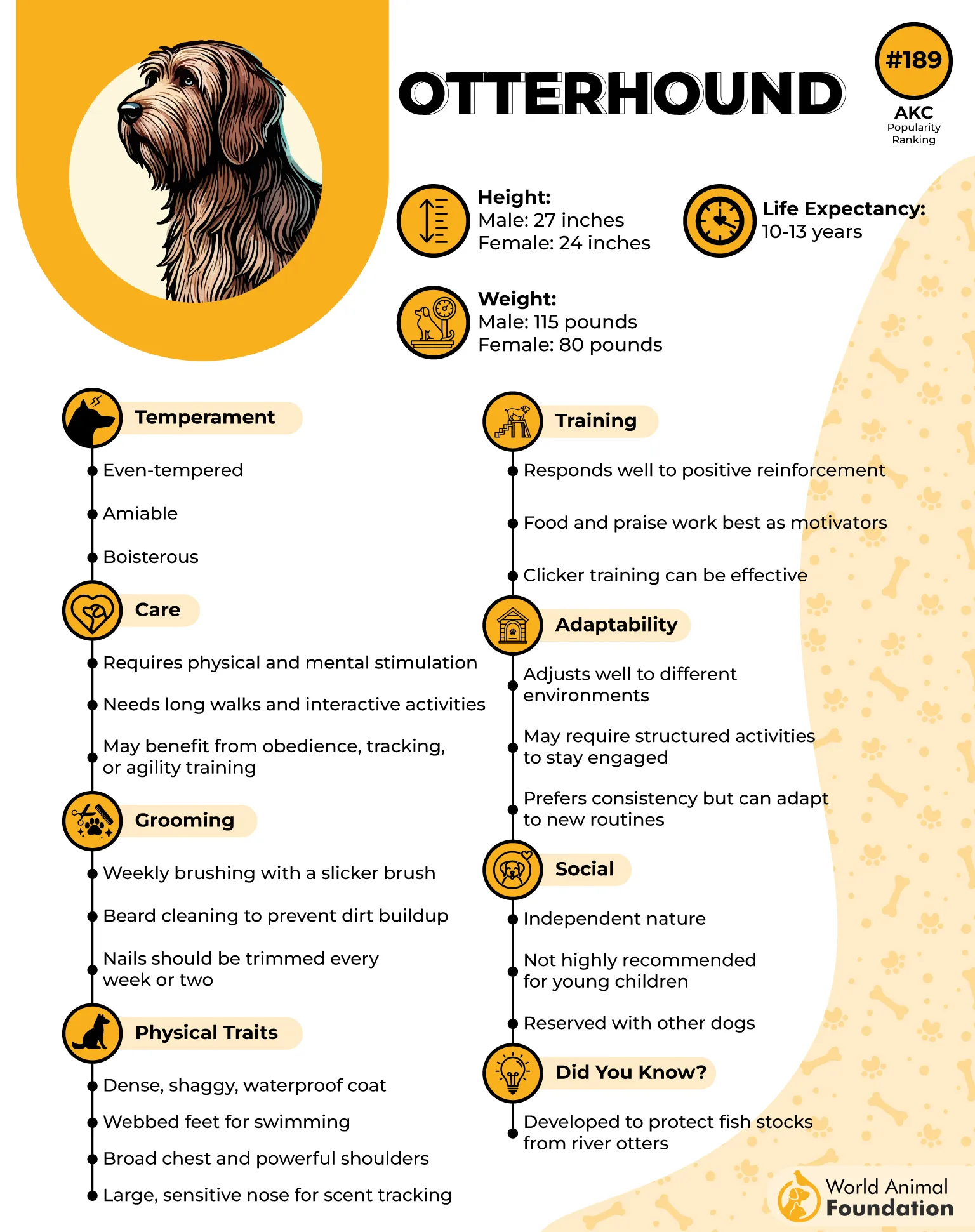
Region & Environment:
Found primarily in the UK, the Otterhound thrives in temperate climates with plenty of space for exercise.
Its historical role as a water-loving hunting dog means it enjoys activities near lakes and rivers, where it can use its keen nose and love for water.
Training, Grooming & Stimulation Needs:
Training: Independent but intelligent; consistent, positive reinforcement works best.
Grooming: Requires regular brushing to maintain its coarse coat.
Stimulation: Needs ample physical activity and mental challenges.
Increasing Popularity:
To boost the Otterhound’s popularity, educating people on its friendly, loyal nature and suitability for active families could lead to more interest.
Raising awareness through dog shows and responsible breeding will help restore this majestic breed’s place in the hearts of many dog lovers.
2. Leonberger
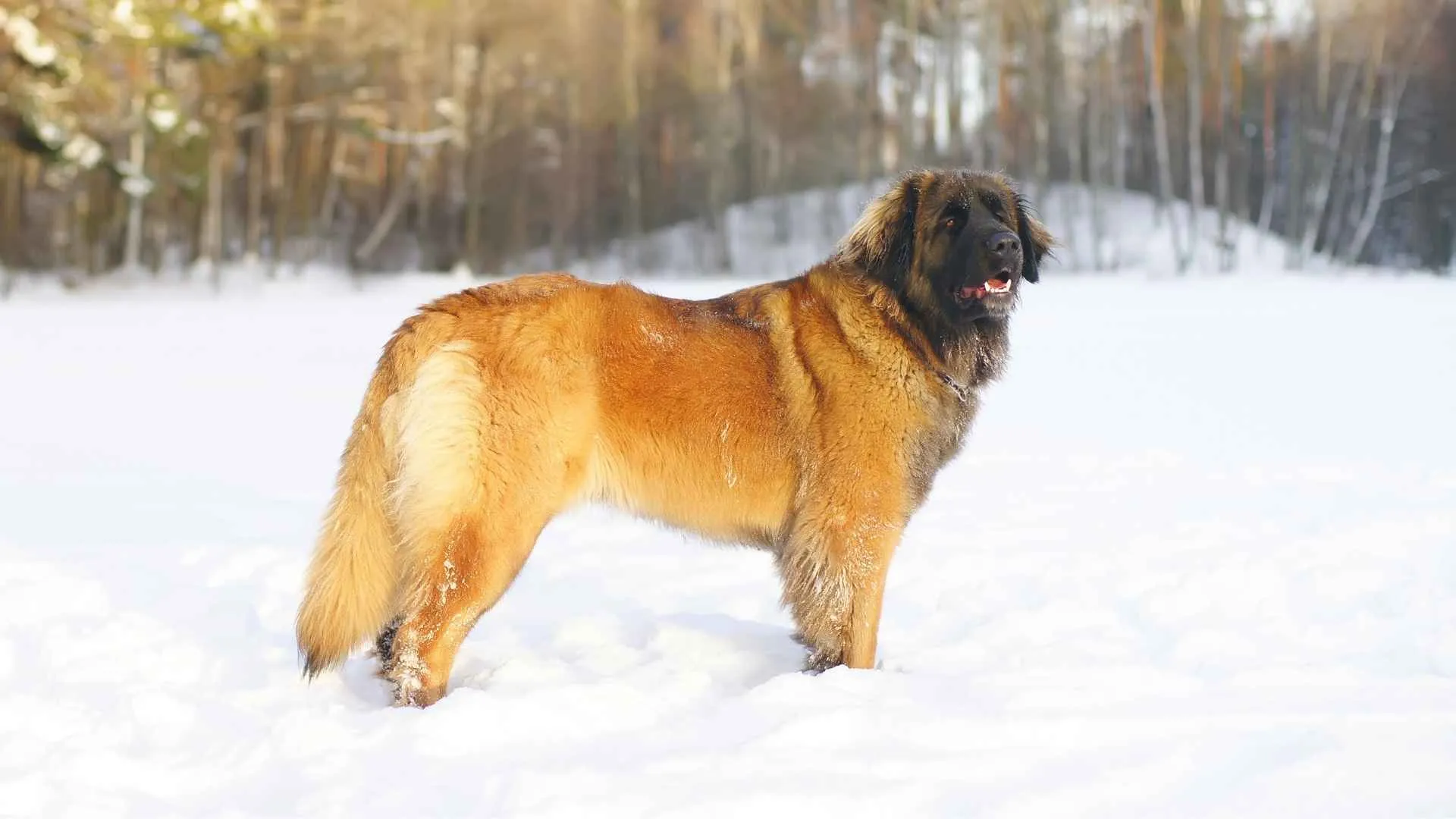
History & Rarity:
Originating in Germany, the Leonberger was initially bred to resemble a lion, symbolizing power and strength.
This giant, noble breed was a companion to European royalty. Its rarity today is partly due to its enormous size, which requires specialized care and ample space.
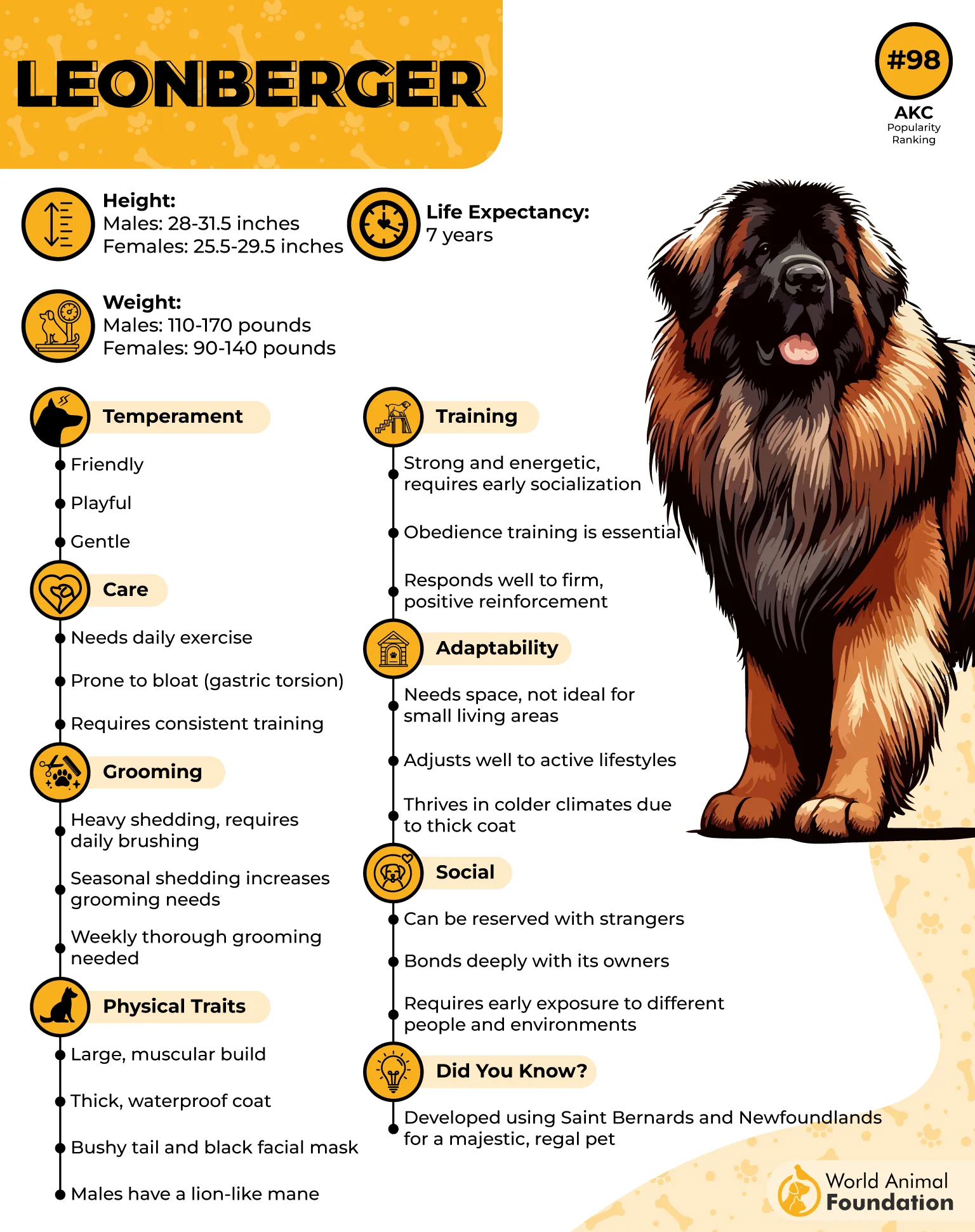
Region & Environment:
The Leonberger is most at home in cooler climates, with its dense coat providing protection against harsh weather.
Historically, it was used for herding and pulling carts, tasks that required endurance and strength. Today, it excels as a family dog in suburban and rural settings where it can get regular exercise.
Training, Grooming & Stimulation Needs:
Training: Intelligent and eager to please, but its large size means early socialization is key.
Grooming: Requires frequent grooming to maintain its thick, double-layered coat.
Stimulation: Needs moderate physical activity; enjoys long walks or swimming.
Increasing Popularity:
By showcasing its friendly, calm demeanor, the Leonberger can attract potential dog owners who have the space and time to care for such a large breed.
Increased availability through responsible breeders and exposure in dog shows could make this majestic breed more common.
3. Komondor
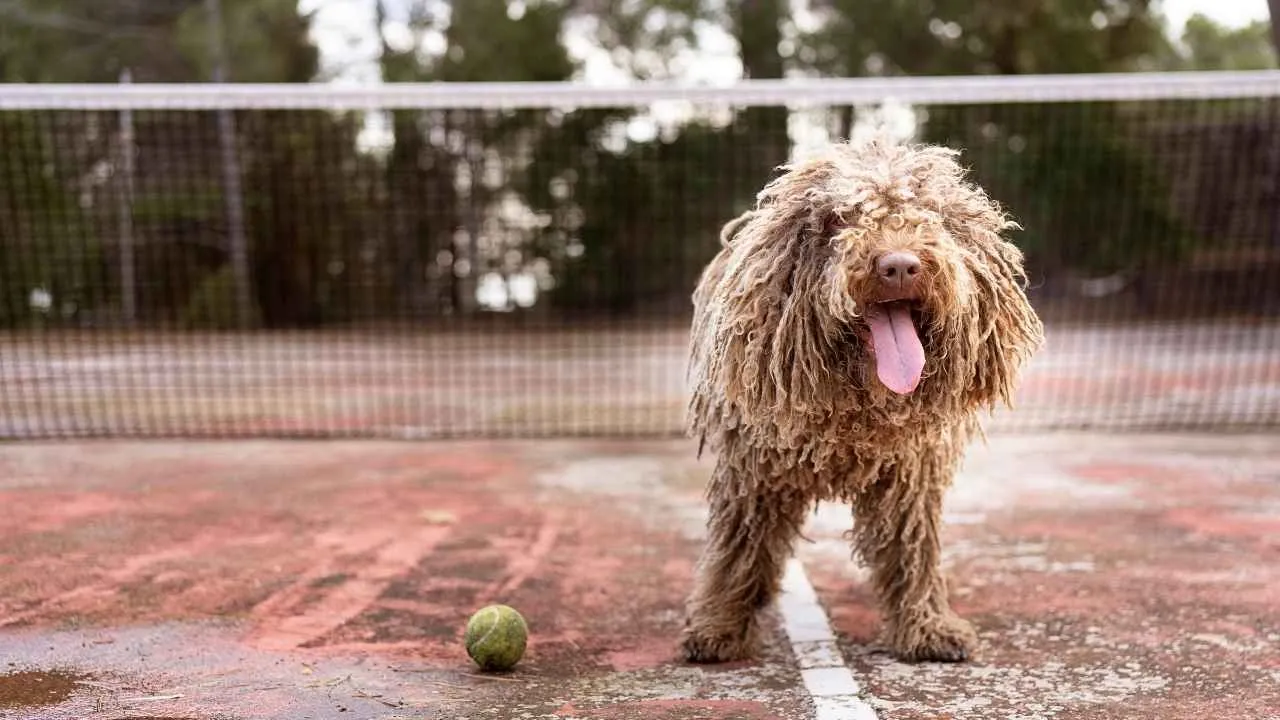
History & Rarity:
The Komondor, with its iconic corded coat, hails from Hungary, where it was originally used to guard livestock.
Its rare, distinct appearance—often compared to a mop—comes from its long, dense coat that matures into cords. While once highly prized for its guarding abilities, the breed’s numbers have dwindled due to changes in farming practices.
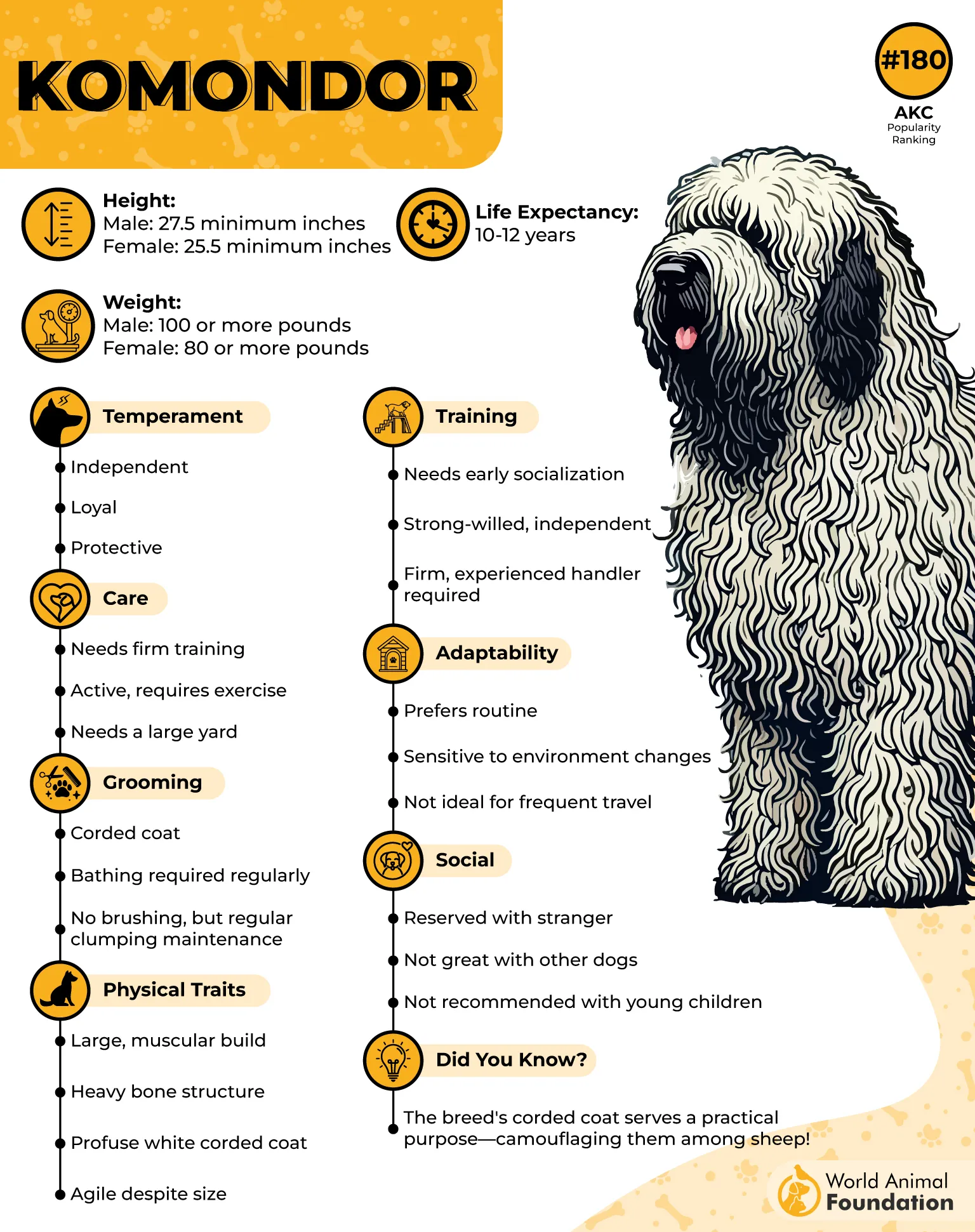
Region & Environment:
Hills Pet reveals that Komondors are most commonly found in Hungary but can adapt to colder climates, as their coat protects them from the elements.
The breed thrives in rural settings with access to large open areas, ideally where they can perform their guarding duties.

Training, Grooming & Stimulation Needs:
Training: Highly independent, making early obedience training essential.
Grooming: Requires regular maintenance to keep their cords clean and healthy.
Stimulation: Needs both mental and physical stimulation; enjoys guarding tasks and family interaction.
Increasing Popularity:
To increase the Komondor’s popularity, potential owners must be educated about the breed’s unique grooming and exercise needs.
Raising awareness through social media, responsible breeding, and focusing on its suitability as a guard dog in rural settings can help revitalize interest in this rare breed.
4. Neapolitan Mastiff
History & Rarity:
The Neapolitan Mastiff, or “Mastino Napoletano,” has ancient roots, dating back to Roman times, where it was used for guarding and protecting homes.
Known for its massive size and wrinkled, loose skin, the breed became rare due to its specialized care requirements and the decline of its traditional roles as guard dogs.
Region & Environment:
Primarily found in Italy, the Neapolitan Mastiff thrives in temperate climates, where its large, droopy frame is better suited for guarding homes rather than extreme heat.
Historically, it served as a guardian of estates and livestock, making it ideal for rural settings, explains PDSA.
Training, Grooming & Stimulation Needs:
Training: While intelligent, they can be stubborn, so early training is essential.
Grooming: Requires minimal grooming but must be cleaned regularly to maintain skin folds.
Stimulation: Moderate exercise needs; enjoys short walks and playing with family members.
Increasing Popularity:
The Neapolitan Mastiff’s gentle and loyal temperament can be better highlighted through dog shows and social media.
Educating potential owners about the breed’s low-maintenance grooming and calm demeanor can help increase its popularity.
5. English Foxhound
History & Rarity:
The English Foxhound, a British breed, was developed for fox hunting during the 16th century. It is known for its endurance, speed, and keen scent, notes WebMD.
While still utilized in some parts of the world for hunting, the breed is rare today due to the decline of fox hunting and a preference for smaller, more manageable dogs.
Region & Environment:
Traditionally found in the UK, the English Foxhound is most comfortable in cool climates and large outdoor spaces. Its history as a hunting companion means it thrives in environments where it can run freely and explore.
Training, Grooming & Stimulation Needs:
Training: Highly trainable but requires firm, consistent leadership due to its independent nature.
Grooming: Minimal grooming needs due to its short coat, though regular brushing is helpful.
Stimulation: Needs significant physical exercise and mental challenges, such as scent games.
Increasing Popularity:
To boost the English Foxhound’s popularity, promoting its versatility as a family dog and its friendly nature could increase interest.
Expanding breeding programs and highlighting its hunting history in outdoor activities may also help bring attention to this rare breed.
6. Chinook
History & Rarity:
The Chinook is a rare, American-bred dog known for its strength and gentle demeanor. Originally developed as a sled dog in the early 1900s, it became rare after World War II due to a lack of interest in sledding and the breed’s limited numbers. Today, it’s one of the most endangered dog breeds in the world, according to AKC.
Region & Environment:
The Chinook was bred for cold climates and is most commonly found in the northern United States, particularly New England.
With its thick double coat, it excels in cooler environments and is comfortable in suburban or rural settings where it can run and play.
Training, Grooming & Stimulation Needs:
Training: Highly intelligent and eager to please, the Chinook is easy to train.
Grooming: Moderate grooming needs due to its thick, dense coat.
Stimulation: Needs plenty of physical exercise, including running or pulling light sleds.
Increasing Popularity:
Raising awareness about the Chinook’s versatile and affectionate nature through social media and educational campaigns can help grow the breed’s presence.
More responsible breeding and the promotion of its historical role as a sled dog will also increase demand.
7. Azawakh
History & Rarity:
The Azawakh is a sleek and elegant sighthound that hails from West Africa, specifically the Sahel region.
Known for its speed and agility, the breed was originally used by nomadic tribes for hunting large game. The Azawakh remains rare outside of its native region due to its unique characteristics and the challenges of breeding it in other climates.
Region & Environment:
Found primarily in the arid climates of West Africa, the Azawakh is well-suited to hot, dry environments. It requires a warm climate to thrive and prefers open spaces to run, making it ideal for rural or expansive areas.
Training, Grooming & Stimulation Needs:
Training: Independent and intelligent, the Azawakh requires patient training and socialization.
Grooming: Very low grooming needs due to its short coat.
Stimulation: Needs daily exercise and loves running; thrives in open spaces.
Increasing Popularity:
Promoting the Azawakh as a family dog for active owners could help increase its popularity in the United States and beyond.
Highlighting its history and its unique physical traits in breed-specific events and media could also raise awareness.
FAQs
What makes rare dog breeds stand out when it comes to loyalty?
Rare dog breeds often have a deep, protective instinct toward their families. Their history as working or guard dogs has shaped their loyalty. These breeds bond closely with their owners, forming strong emotional connections.
Are these rare, loyal breeds easy to train and live with?
Some rare breeds, like the Azawakh or Komondor, can be independent and require consistent, patient training. While they’re intelligent, they may need more time and effort to socialize. Their loyalty makes them responsive to the right training methods.
What should first-time dog owners know before choosing a rare, loyal breed?
First-time owners should be prepared for the unique needs of rare breeds, such as high energy or specific grooming requirements. Understanding the breed’s temperament and exercise needs is crucial. Patience and consistency in training will lead to a rewarding relationship.
Conclusion
The rare breeds we’ve explored in this article are some of the most loyal and devoted dogs you can find. Whether it’s the fiercely loyal Azawakh or the protective Komondor, these dogs form strong bonds with their families and are perfect for active households.
If you’re ready for a high-energy companion that thrives on consistent training and mental stimulation, these breeds will add excitement and joy to your life. Their loyalty and deep bond make them exceptional family companions.
Ready to find a dog that truly gets along with your family? These breeds are waiting to bring loyalty and companionship into your home.


